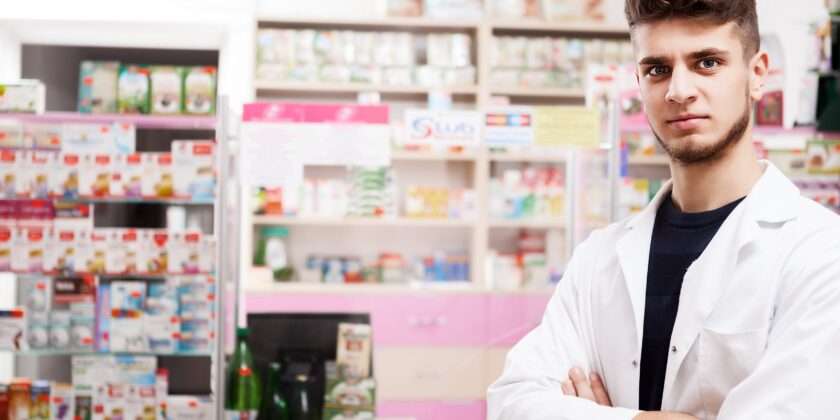Why are drugs so expensive? Everyone has heard of the massive price increases of essential medications by pharmaceutical companies. The Epi-Pen saga1 is an example of possible price gouging by a drug maker.
The FDA says on average, the cost2 of a generic drug is 80 to 85 percent lower than the brand-name product. That doesn’t mean that generic medicines are always inexpensive! With this fact in mind, Jay Harold presents you relevant information on generic drugs.
What are Generic Drugs?
A generic drug3 is identical — or bioequivalent — to a brand name drug in dosage form, safety, strength, route of administration, quality, performance characteristics and intended use. Although generic drugs are chemically identical to their branded counterparts, they are typically sold at substantial discounts from the branded price. According to the Congressional Budget Office, generic drugs save consumers an estimated $8 to $10 billion a year at retail pharmacies. Even more, billions are saved when hospitals use generics.
After reading the information presented so far, you should still be wondering why generic drugs sometimes are expensive even with insurance. Let’s dig at little deeper to get a better handle on the costs involved in making a generic drug.
Generic Drug Facts You Need to Know
- When a generic drug product is approved, it has met rigorous standards established by the FDA with respect to identity, strength, quality, purity, and potency. However, some variability can and does occur during manufacturing, for both brand name and generic drugs. When a drug, generic or brand name, is mass-produced, very small variations in purity, size, strength, and other parameters are permitted. FDA limits how much variability is acceptable.
- Generic drugs are required to have the same active ingredient, strength, dosage form, and route of administration as the brand-name product. Generic drugs do not need to contain the same inactive ingredients as the brand name product.
- The generic drug manufacturer must prove its drug is the same as (bioequivalent) the brand name drug. For example, after the patient takes the generic drug, the amount of drug in the bloodstream is measured. If the levels of the drug in the bloodstream are the same as the levels found when the brand name product is used, the generic drug will work the same.
- Through a review of bioequivalence data, FDA ensures that the generic product performs the same as its respective brand name product. This standard applies to all generic drugs, whether immediate or controlled release.
All generic manufacturing, packaging, and testing sites must pass the same quality standards as those of brand-name drugs, and the generic products must meet the same exacting specifications as any brand name product. In fact, many generic drugs are made in the same manufacturing plants as brand-name drug products. This means the generic drugs don’t have the research and development costs of the brand name drugs.
What This Means to You!
Ameet Sarpatwari4 , a Contributing Editor at the Harvard Medical School, gives some reasons why generic drugs are going up in price. Dr. Sarpatwari, who is a professor and a lawyer, states that most of us think of generics as the less expensive alternative to the brand-name version of a prescription drug — and that’s often the case. The pharmaceutical companies that make generics can sell them for lower prices because they didn’t have to pay for the research and development that brought the drug to market in the first place. However, this cost advantage can take a back seat in situations such as the following, in which competition is reduced or delayed, enabling generic manufacturers to increase their prices:
- The market for some generic drugs is so small that it does not attract multiple producers, as with pyrimethamine (Daraprim), a very old drug used to treat a parasitic infection called toxoplasmosis. GlaxoSmithKline had long been the only producer of pyrimethamine but priced it modestly. This August, however, Turing Pharmaceuticals acquired rights to the drug and exploited its monopoly, raising the price 5,000% (from $13.50 to $750 a pill).
- In some cases, the number of producers of a generic drug decreases because of an ongoing wave of market consolidation within the pharmaceutical industry.
- Unanticipated safety issues can limit the supply of a generic drug. Hikma Pharmaceuticals, for example, was forced to stop production of doxycycline in 2011 due to quality concerns at its New Jersey plant. The shortage resulted in a 6,000% increase in the price of the drug.
- It can be difficult and expensive for a manufacturer to get a generic drug to market in the first place. The average time for the Food and Drug Administration (FDA) to process a generic drug application was 42 months in 2014, compared with an average of 8 months for a standard new drug application.
- A generic manufacturer must demonstrate that its version of a drug is equivalent to an existing “reference” product already on the market. When only one company produces a drug and tightly controls its distribution, it can be extremely difficult for other companies to secure samples of this reference product.
The Tufts Center for the Study of Drug Development5 announced on March 10, 2016, that the average cost to develop and gain marketing approval for a new drug—pegged at $2.558 billion. You should expect that the new drug manufacturers would create barriers for generic drugs.
The consumer is in a terrible situation concerning generic drugs. The FDA is working to reduce the time needed to process a generic drug application, and this may result in significant savings for the generic drug manufacturers. The fear of public pressure on drug companies raising prices unreasonably also appears to hold down increases.
Jay Harold will talk about more generic drug issues in a future post soon.
Click this link to get free Health and Wealth information to improve your life. Play the free “Slow Roll Through Civil Rights” Game found on the Jay Harold website. Enjoyed this post? Share it and read more here. Questions? “Ask the Pharmacist a Question!”
Bibliography
- http://time.com/4477455/epipen-hillary-clinton/
- http://www.fda.gov/drugs/resourcesforyou/consumers/buyingusingmedicinesafely/understandinggenericdrugs/ucm167991.htm
- http://www.fda.gov/Drugs/ResourcesForYou/Consumers/QuestionsAnswers/ucm100100.htm
- http://www.health.harvard.edu/blog/why-many-generic-drugs-are-becoming-so-expensive-201510228480
- http://csdd.tufts.edu/news/complete_story/tufts_csdd_rd_cost_study_now_published





